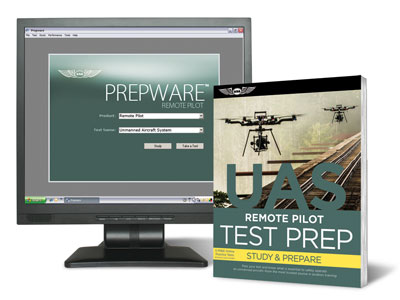Drone operation is one of the most popular topics in the world of aviation right now. It has taken off over the last few years and is growing at an astounding pace. The FAA has been playing catch up with regulating this growing Small Unmanned Aircraft System (sUAS) industry. The recently released Part 107 of the Code of Federal Regulations (CFR), which details the rules and regulations governing sUAS. Most notable is the addition of the Remote Pilot Certificate. Beginning August 29, 2016, these rules and regulations will go into effect essentially requiring anybody intending to use sUAS for commercial operations to obtain a Remote Pilot Certificate. I have received a lot of questions from individuals lately wondering the process of obtaining a remote pilot certificate and whether or not they actually will need one, because remember it’s only required for commercial operators. I have put together the below flow chart which will help you determine whether or not you need a Remote Pilot Certificate, and if you do how you may obtain one.
If you went down the left side of this flowchart you are in good shape. Any individual operating a sUAS (drone) just for fun will not be required to hold a Remote Pilot Certificate. However, you are still required to adhere to certain safety guidelines as outlined in the chart above.
Moving down the right side of the flow chart you have deemed yourself to be a commercial operator of an sUAS. You have one of two paths to take at this point: are you a first-time pilot or an existing pilot? An existing pilot means you already have a pilot certificate issued under Title 14 CFR Part 61 that is something other than a student pilot certificate.
FIRST TIME PILOTS: You are required to take the FAA Aeronautical Knowledge Exam for sUAS. This is a 60 questions test in which you will have two hours to complete and must pass with a score of 70% or higher. The test will be available nationwide beginning August 29th 2016. 14 CFR §107.73(a) outlines the knowledge areas in which you will be tested on.
§107.73(a) An initial aeronautical knowledge test covers the following areas of knowledge:
(1) Applicable regulations relating to small unmanned aircraft system rating privileges, limitations, and flight operation;
(2) Airspace classification, operating requirements, and flight restrictions affecting small unmanned aircraft operation;
(3) Aviation weather sources and effects of weather on small unmanned aircraft performance;
(4) Small unmanned aircraft loading;
(5) Emergency procedures;
(6) Crew resource management;
(7) Radio communication procedures;
(8) Determining the performance of small unmanned aircraft;
(9) Physiological effects of drugs and alcohol;
(10) Aeronautical decision-making and judgment;
(11) Airport operations; and
(12) Maintenance and preflight inspection procedures.
To find your local testing center visit www.CATSTEST.com or www.LASERGRADE.com both official FAA testing providers. I encourage you to sign up early as slots to take the exam are filling up quickly. For more on how to study, keep reading.
EXISTING PILOTS: You actually have two options. One, you can take the above outlined sUAS knowledge test, or you may simply take the FREE online training course (ALC-451) at www.faasafety.gov. The online training course takes roughly 2-3 hours and concludes with a short quiz. Since you are already a certificated pilot, the training course covers more specific information as it relates to sUAS operations. 14 CFR §107.74(a) outlines this knowledge content which will be covered in the course.
§107.74 (a) An initial training course covers the following areas of knowledge:
(1) Applicable regulations relating to small unmanned aircraft system rating privileges, limitations, and flight operation;
(2) Effects of weather on small unmanned aircraft performance;
(3) Small unmanned aircraft loading;
(4) Emergency procedures;
(5) Crew resource management;
(6) Determining the performance of small unmanned aircraft; and
(7) Maintenance and preflight inspection procedures.
Once you have completed either the FAA knowledge exam or the free online training course you will need to complete an FAA Airman Certificate and/or Rating Application (Form 8710-13) to apply for your remote pilot certificate. Beginning early September, you will be able to complete this process through IACRA: https://iacra.faa.gov.
Study. Not a word everyone likes to hear, but both the online course and knowledge test will require some in depth studying from the applicant. Lucky for you ASA has got you covered with Remote Pilot (sUAS) Test Prep Material. Our Test Prep material is designed to get you ready for the FAA Knowledge Exam as well as the free online course.
For a complete description and in-depth step by step process on earning a Remote Pilot Certificate check out the FAA webpage Becoming a UAS Pilot.






